Have issues with the sound after installing Windows 11? Is the sound distorted, inaudible, or unable to detect any output devices? This article is all you need if the answer to those questions is yes.
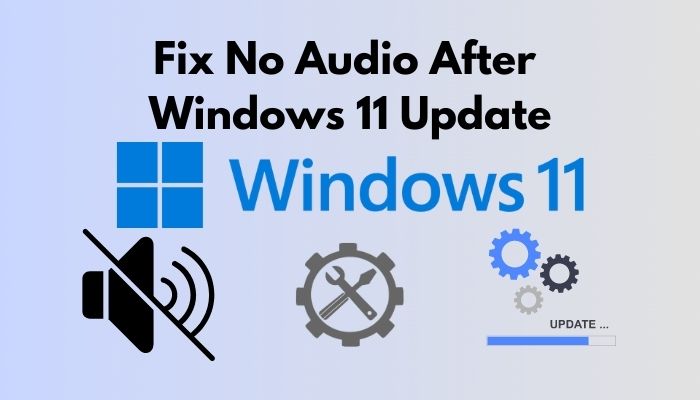
Why is my sound not working after Windows 11 update?
I know this may feel frustrating, but I was in the same situation as you just a few weeks ago. It took me a while to find a working fix but don’t worry, it’ll only take 3 minutes for you. I tested these fixes myself before writing them.
So, hurry up! The clock’s ticking, and you need to eliminate your audio troubles in under 180 seconds.
How to Fix No Audio After Windows 11 Update?
Make sure you have tried solving your issues using a few basic methods. These methods include rebooting your PC at least once, increasing the volume to max, and unmuting.
Here are the methods to fix no audio after Windows 11 update:
1. Make Sure Audio Device is Set as Default
Windows has a valuable ability to play audio to multiple audio sources, but the downside to this is that sometimes Windows doesn’t recognize the proper output device that is currently being used.
You need to set the device you want to output audio to as your default output device to fix that. In my case, it’s going to be speakers, but it could be headphones or external speakers for you.
Here are the steps to make sure the audio device is set as default:
- Locate the small audio icon on the bottom right corner of your taskbar, do a right-click on it, and select Sounds from the menu.
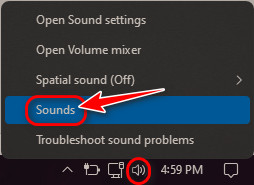
- Switch to the Playback tab on the Sounds window from the top.
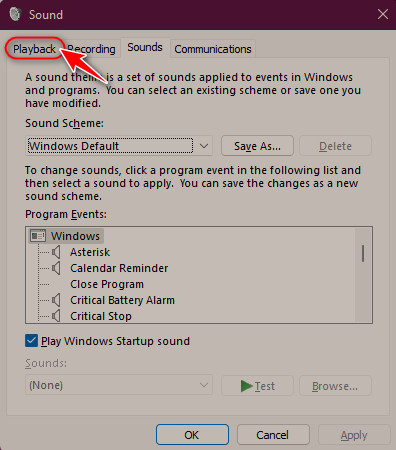
- Select the Output Device you are currently using from the list and click on the Set Default button at the bottom of the window. Once you are done, click on OK to apply the changes.
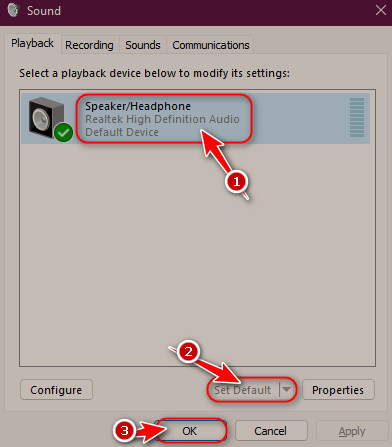
Also, check out our separate post on how to fix Windows can’t access network drive on Windows 11.
2. Run Windows Audio Troubleshooters
This should be part of the basic fixes, but I noticed many people don’t know about this feature. Basically, you can tell Windows to automatically run a couple of tests to detect any issues with audio and fix them by launching troubleshooters.
Here is the method to run Windows audio troubleshooters:
- Click on your Start menu icon, search for ‘Control Panel’ and launch the first result.
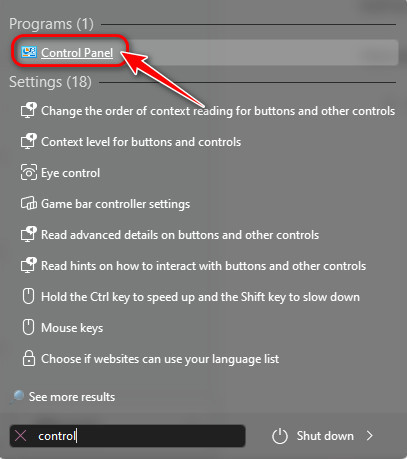
- Locate the text field on the top right corner and search for ‘troubleshoot’. Click on Troubleshooting from the results.

- You should be redirected to a page where you need to click on ‘Hardware and Sound’, under the ‘Troubleshoot computer problems’ section.
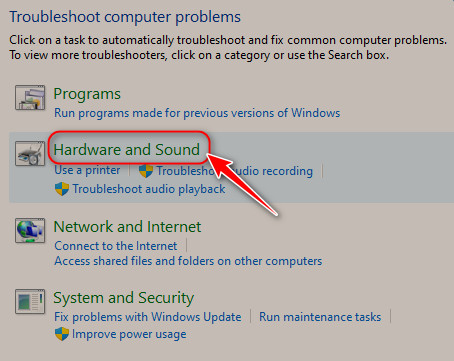
- Click on ‘Playing Audio’ in the Sound section to start the troubleshooter. Follow the instructions on the next window to find and fix issues.
Follow our guide on keyboard not working on windows 11.
3. Unmute Browser Tab
If all your other applications produce sound normally, but you can’t hear anything from your browser, you must unmute the browser tab. Almost every browser has this feature nowadays, and the steps are relatively similar.
Follow these steps to unmute the browser tab:
- Open your browser and go to the tab that is not playing any sound.
- Right-click on your tab from the top and select ‘unmute site’ or a similar option.
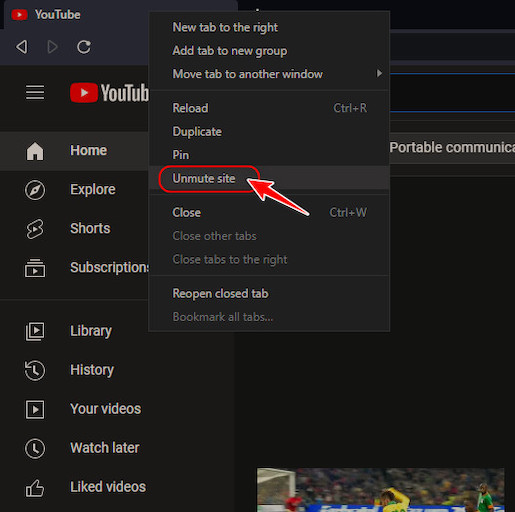
Also, check out our separate post on how to find computer name on Windows 11.
4. Install Latest Windows Updates
It’s essential to keep Windows updated to avoid bugs in the system or improve security. Usually, Windows updates on its own, but if you ever disabled or paused Windows updates for some reason, you need to check and install updates quickly.
Here are the steps to follow for installing the latest Windows updates:
- Right-click on the Start icon and select Settings from the menu.
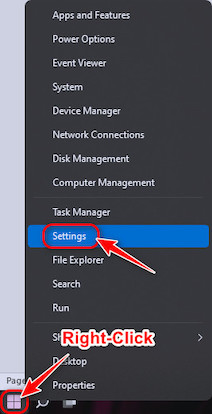
- Click on ‘Windows Updates’ from the list of options on the left menu.
- Next, click on the blue ‘Check for updates’ button on the top right corner to scan the online database for the latest build.
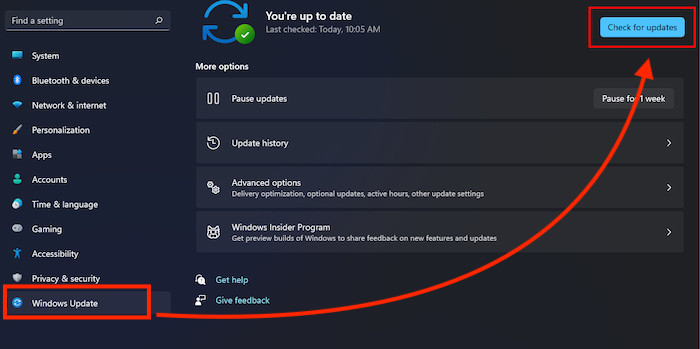
5. Make Sure Audio Drivers are Updated
Similar to Windows updates, the drivers in your system need to be updated frequently. In case you don’t know what I’m talking about, drivers are necessary to communicate and translate instructions from the computer to some hardware component like speakers.
Here’s what you need to do to make sure audio drivers are updated:
- Do a right-click on the Start icon at the bottom left corner of the taskbar and click on ‘Device Manager’.
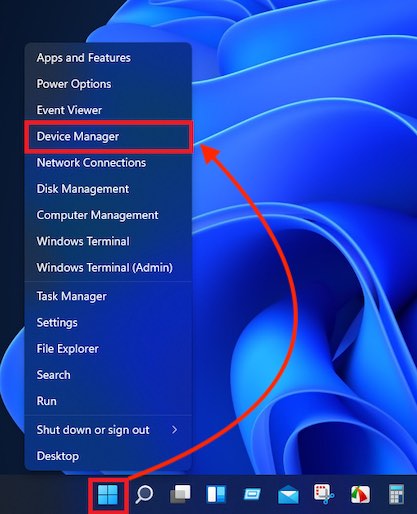
- Expand ‘Sound, video and game controllers’ by double-clicking, then right-click on any driver in the expanded list and select ‘Update driver’.
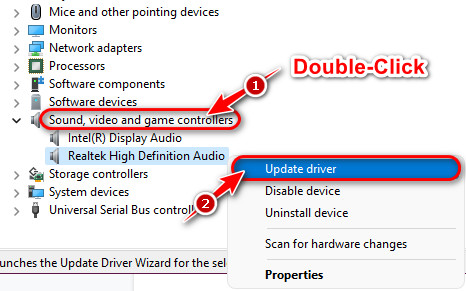
- Repeat the previous step for every driver in the expanded list.
6. Reboot Audio Services Manually
If there is a malfunction with one of the services or processes causing this issue, then forcefully restarting them should solve the problem.
Follow this method to reboot audio services manually:
- Launch the Start menu, type ‘Services’, and select the result that appears first.

- Select a random service from the next window and press the ‘w’ key on your keyboard. Scroll, right-click on ‘Windows Audio’, and select Restart.
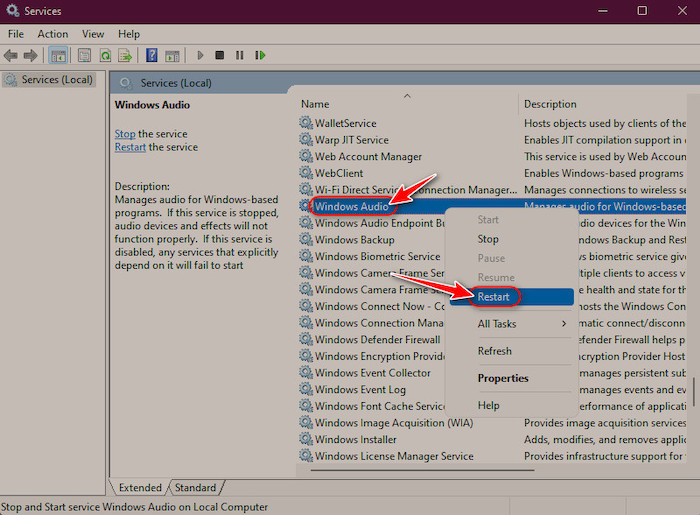
- Similarly, right-click on ‘Windows Audio Endpoint Builder’ and click on Restart.
7. Check Speaker Cables for Damages
As unlikely as it might seem, you should definitely check and see if your cables got disconnected or they got damaged somehow. While you are at it, try removing the dust off the wires and reconnecting them.
If the cables can be replaced, I recommend trying out a new cable instead for a better chance of success.
Quickly check out our epic guide on how to turn on or off Device Encryption on Windows 11.
8. Connect Speakers to a Different PC
After you tried the previous method and didn’t find any significant damage on the cables, you could try out the speakers on another working computer. If the sound works with the other PC, you can conclude that your computer is the issue.
Otherwise, your speakers are damaged and need to be replaced.
9. Turn Off Third-Party Audio Modifiers
One of the best things about Windows is the ability to customize many aspects of the system, including the sound. I installed a couple of sound enhancement software like Boom3d or Dolby Atmos on my PC months ago myself to improve the quality of the sound output.
However, these enhancements actually interfere with the default audio services and sometimes cause problems. If you want to avoid issues with your audio, you have to disable or uninstall any sound enhancement software you might have installed.
FAQ
Are there audio drivers for Windows 11?
Yes, there are audio drivers for Windows 11. No matter what operating system you use, there needs to be basic audio, video, and other drivers always available for your system to work flawlessly.
Does Windows Update affect audio?
Yes, Windows Update affects the audio. It doesn’t affect most of the time, but it can sometimes reduce or enhance the audio quality depending on the compatibility. You can roll back a recent update if it’s causing issues from Windows settings.
Why does my computer suddenly have no sound?
Your computer suddenly has no sound because you connected a headset or a separate audio source. It could also be due to high CPU and RAM usage, and you can fix it quickly by restarting if that’s the case.
How do I unmute sound in Windows 11?
You can unmute sound in Windows 11 by clicking on the Speaker icon on the bottom right corner of your Taskbar and then dragging the slider next to a similar speaker icon all the way to the right.
Where is my Realtek HD audio manager?
Your Realtek HD Audio Manager can be found by launching a Control panel window and going to the Hardware and Sound section. The Realtek HD Audio Manager should show up on this page. If it doesn’t, you don’t have it installed.
Final Thoughts
To conclude, you shouldn’t have any trouble getting your Windows sound back on Speakers if you followed my article step-by-step without skipping anything. One last method I didn’t mention is resetting your PC, but this is not guaranteed to work, and you will lose all your data.
Thank you for reading my article, and do leave any queries down in the comments.




